A captivating array of ducks in Hawaii grace the diverse landscapes, contributing to the archipelago’s rich avian tapestry.
Nine distinct duck species, each with its unique characteristics, inhabit the islands, navigating between endemic residents and migratory visitors.
From the endangered Hawaiian Duck to the striking Northern Shoveler and the adaptable Mallard, these avian inhabitants paint a vivid picture of biodiversity.
In this exploration, we delve into the lives of these nine ducks, unraveling their habitats, behaviors, and critical conservation efforts to preserve their existence in the enchanting and ecologically significant Hawaiian environment.
Join us on a journey through the vibrant feathered community that calls Hawaii home, uncovering the tales of resilience and coexistence within these Pacific isles. So, stay focused.
9 Ducks in Hawaii
Ducks in Hawaii play a crucial role in the ecological balance of the islands. As both residents and migrants, they contribute to nutrient cycling, seed dispersal, and control of insect populations.
Explore the diverse avian tapestry of Hawaii, where the vibrant landscapes host an array of duck species.
Each species contributes to the ecological richness, from the endangered Hawaiian Duck to transient visitors like the Eurasian Wigeon.
Delve into the unique lifestyles, habitats, and conservation statuses of these ducks, showcasing the fascinating avian biodiversity of the Hawaiian archipelago.
1. Hawaiian Duck
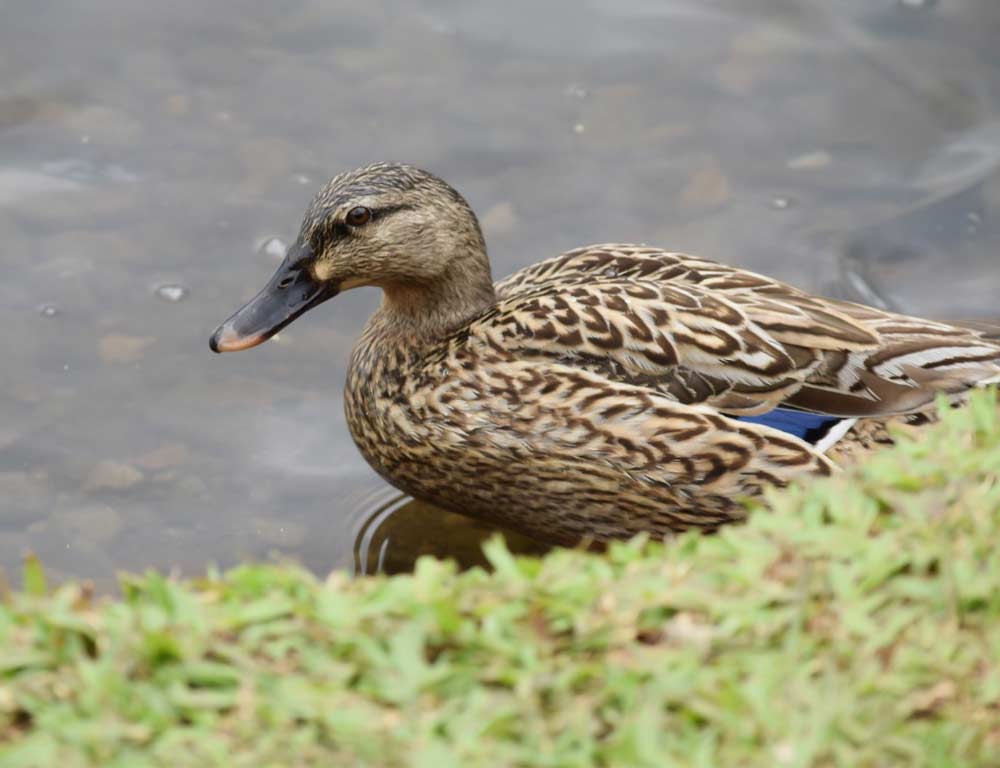
- Scientific Name: Anas Wyvilliana
- Life Span: 5-8 years
- Size: Approximately 16-18 inches
- Weight: 1-2 pounds
- Food: Omnivorous; diet includes aquatic plants, insects, and small crustaceans
- Wingspan: Around 30 inches
- Status: Endangered
The Hawaiian Duck, also known as the Koloa Maoli, is an endemic species to the Hawaiian Islands. These ducks prefer freshwater habitats such as ponds, lakes, and marshes.
With their distinctive mottled brown plumage, they blend seamlessly into the lush Hawaiian landscapes.
Unfortunately, their population has faced significant declines due to habitat loss, introduced predators, and interbreeding with introduced mallards.
Hawaiian Ducks lead a diurnal lifestyle, foraging daily for a varied diet that includes aquatic plants, small invertebrates, and insects.
They are well adapted to the Hawaiian environment, utilizing their webbed feet for efficient swimming and dabbling.
Conservation efforts are underway to protect and restore their habitats and mitigate the threats they face, aiming to secure the future of this unique species in the Hawaiian archipelago.
2. Laysan Teal
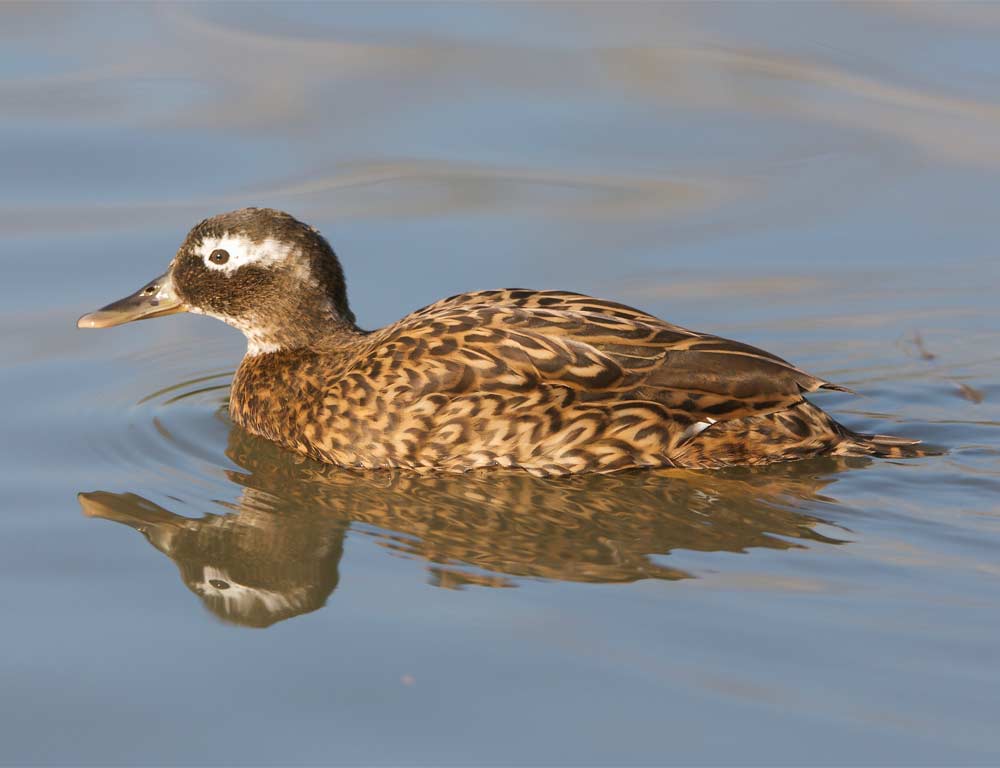
- Scientific Name: Anas laysanensis
- Life Span: 10-15 years
- Size: Approximately 15 inches
- Weight: 0.5-1 pound
- Food: Herbivorous; primarily grazes on plants and seeds
- Wingspan: Around 24 inches
- Status: Vulnerable
Endemic to the Northwestern Hawaiian Islands, the Laysan Teal is a small and striking duck with distinctive chestnut coloring on its face. These ducks inhabit low-lying islands, often near shallow brackish or freshwater ponds.
Their diet consists mainly of plants and seeds, and they are well adapted to feeding in terrestrial and aquatic environments.
Laysan Teals exhibit interesting social behaviors, often forming monogamous pairs during breeding. Their populations have faced challenges due to habitat destruction, predation by introduced species, and the potential impacts of climate change.
Conservation initiatives, including habitat restoration and predator control, aim to stabilize and enhance the survival prospects of this unique Hawaiian waterfowl.
3. Eurasian Wigeon
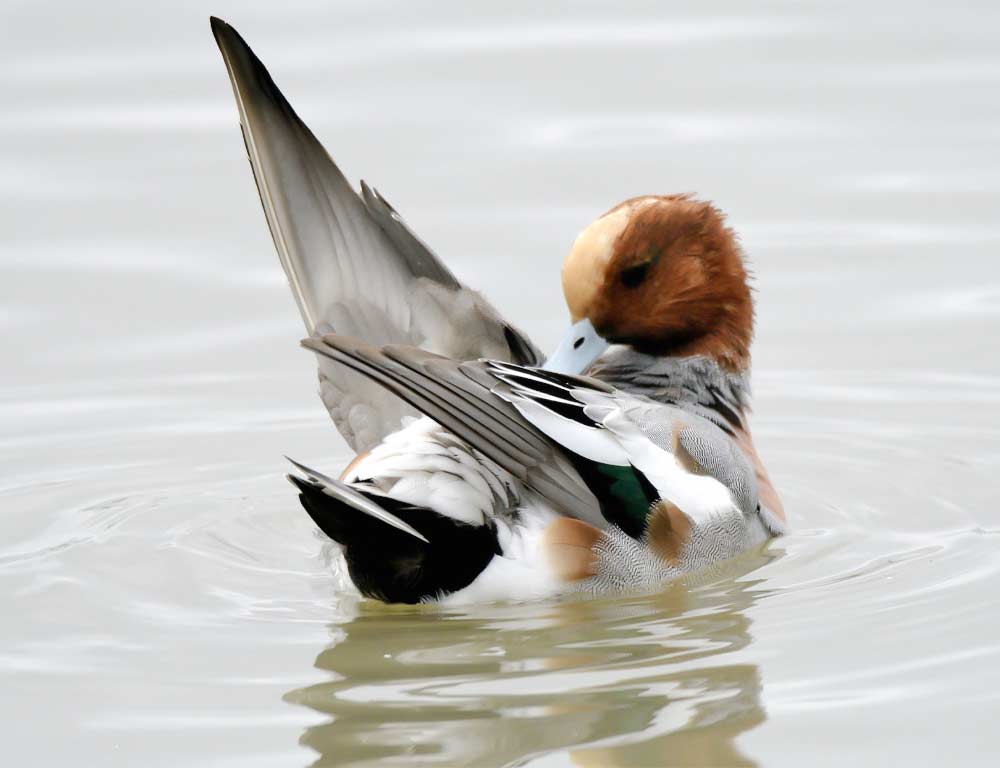
- Scientific Name: Mareca Penelope
- Life Span: 5-10 years
- Size: Approximately 18 inches
- Weight: 1-2 pounds
- Food: Omnivorous; diet includes aquatic plants, insects, and small invertebrates
- Wingspan: Around 28 inches
- Status: Least Concern
The Eurasian Wigeon is a migratory species that occasionally visits Hawaii, primarily during winter.
These ducks are known for their striking appearance, with males featuring a distinctive cream-colored forehead and a vibrant reddish-brown head. While not native to Hawaii, they can be found in various wetland habitats during their temporary stays.
In Hawaii, Eurasian Wigeons display typical behaviors of their species, including dabbling in the water for aquatic vegetation and foraging on land for insects and seeds.
As a relatively common species globally, their status in Hawaii is categorized as “Least Concern.” The transient nature of their presence highlights the importance of preserving diverse habitats, even for migratory species like the Eurasian Wigeon.
4. Fulvous Whistling Duck
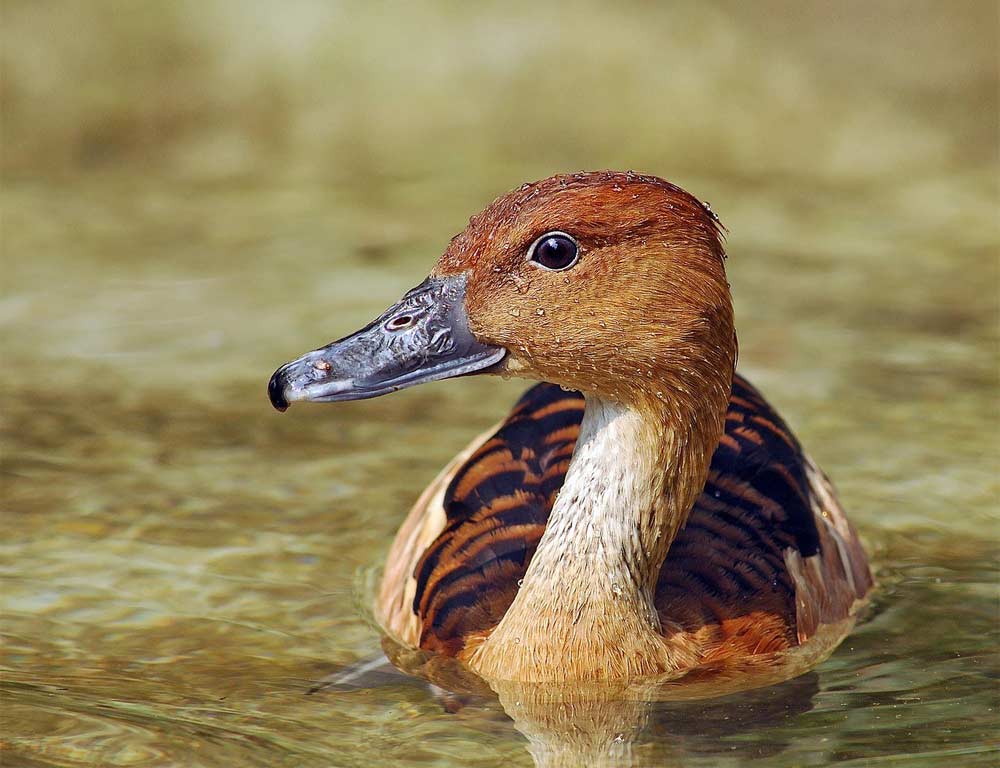
- Scientific Name: Dendrocygna bicolor
- Life Span: 7-10 years
- Size: Approximately 18-22 inches
- Weight: 1.5-2.5 pounds
- Food: Omnivorous; diet includes seeds, insects, and aquatic plants
- Wingspan: Around 31 inches
- Status: Least Concern
The Fulvous Whistling Duck is a striking bird with a distinctive reddish-brown plumage. Native to the Americas, they are commonly found in wetlands, marshes, and ponds.
These ducks are known for their whistling calls, especially during flight. Their omnivorous diet consists of various seeds, insects, and aquatic plants.
Fulvous Whistling Ducks are known for their gregarious nature, often forming large flocks during the non-breeding season. They are skilled swimmers and foragers, using their long necks to reach submerged vegetation.
In Hawaii, if present, they would likely exhibit similar behaviors, taking advantage of the diverse wetland habitats available.
5. American Wigeon
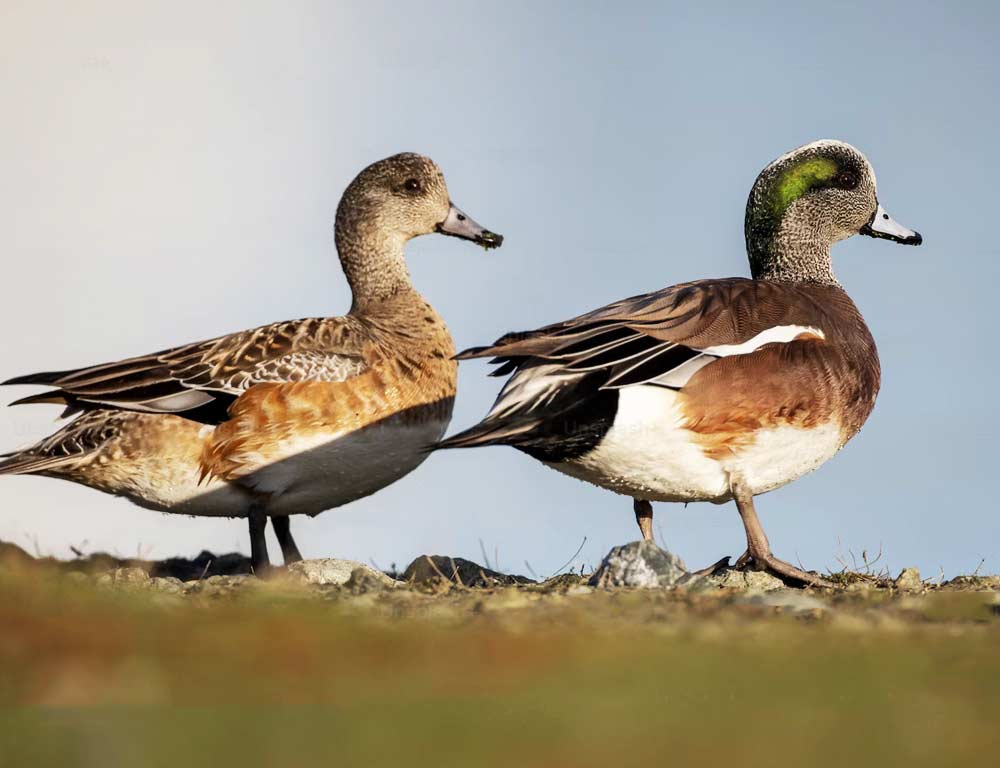
- Scientific Name: Mareca americana
- Life Span: 10-15 years
- Size: Approximately 18-23 inches
- Weight: 1-3 pounds
- Food: Herbivorous; diet includes aquatic plants, grasses, and seeds
- Wingspan: Around 28 inches
- Status: Least Concern
The American Wigeon is a migratory duck with a distinctive white crown on its head and a colorful iridescent patch on its wings.
These ducks are commonly found in various wetland habitats, including ponds, lakes, and estuaries. Their herbivorous diet consists of aquatic plants, grasses, and seeds.
During their winter migration, American Wigeons may visit Hawaii, utilizing the diverse water bodies present in the islands.
They are known for dabbling, upending in the water to feed on submerged vegetation. Conservation efforts globally focus on preserving their crucial breeding and wintering habitats.
6. Northern Shoveler
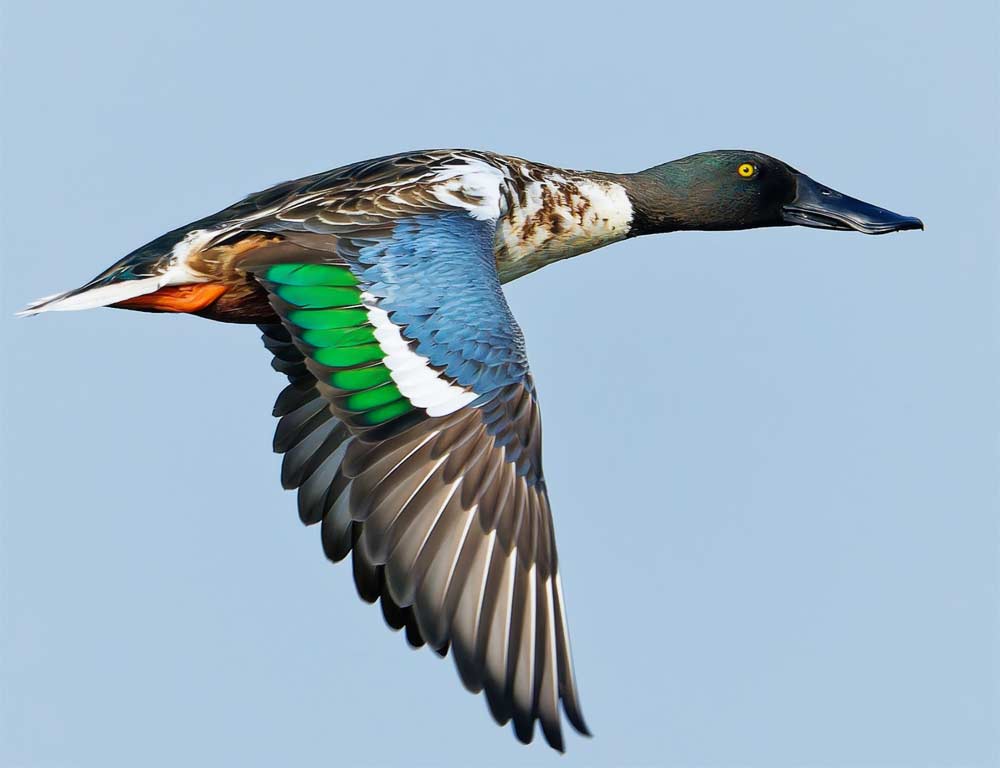
- Scientific Name: Anas clypeata
- Life Span: 10-15 years
- Size: Approximately 18-22 inches
- Weight: 1-2 pounds
- Food: Omnivorous; diet includes aquatic invertebrates, seeds, and plants
- Wingspan: Around 28 inches
- Status: Least Concern
The Northern Shoveler is characterized by its distinctive sizeable spatula-shaped bill. These ducks are found in various wetland habitats, including ponds, marshes, and lakes.
Their omnivorous diet consists of aquatic invertebrates, seeds, and plants. Northern Shovelers are known for their unique feeding strategy, using specialized bills to filter food from the water’s surface.
They are often observed in small groups, and in Hawaii, they would likely exploit the available wetland resources.
Their global conservation status as “Least Concern” underscores the importance of maintaining suitable habitats for these and other waterfowl species.
7. Lesser Scaup
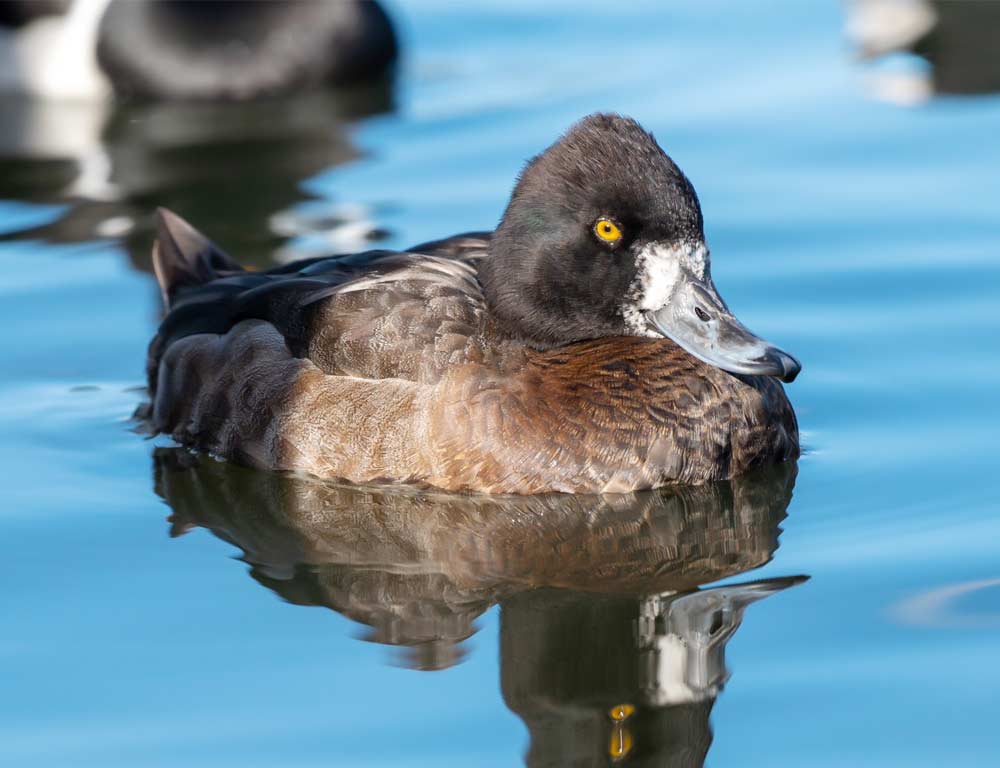
- Scientific Name: Aythya affinis
- Life Span: 12-15 years
- Size: Approximately 14-18 inches
- Weight: 1-2 pounds
- Food: Omnivorous; diet includes aquatic plants, small fish, and invertebrates
- Wingspan: Around 24 inches
- Status: Least Concern
Lesser Scaups are diving ducks commonly found in North America, including their migration routes to and from wintering grounds.
Their breeding habitats include freshwater lakes and ponds. Omnivorous in nature, Lesser Scaups feed on aquatic plants, small fish, and invertebrates.
These ducks are known for their buoyant diving behavior, disappearing beneath the water’s surface to forage for food. Their winter migration might bring them to Hawaii, where they could utilize various freshwater habitats.
Conservation efforts often focus on preserving the quality of breeding and wintering habitats and addressing potential threats like pollution.
8. Northern Pintail
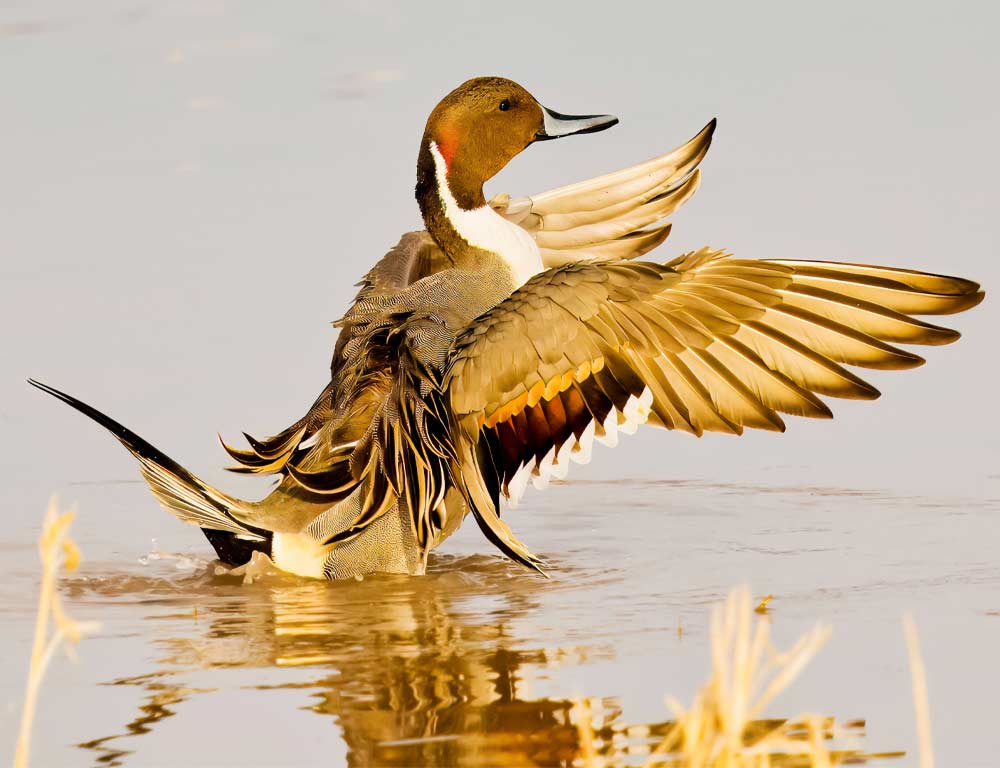
- Scientific Name: Anas acuta
- Life Span: 5-10 years
- Size: Approximately 20-30 inches
- Weight: 1-2 pounds
- Food: Omnivorous; diet includes aquatic plants, seeds, and invertebrates
- Wingspan: Around 30-35 inches
- Status: Least Concern
Recognized for their long necks and slender bodies, Northern Pintails are migratory ducks across the Northern Hemisphere.
Breeding habitats include freshwater marshes and ponds. They are omnivorous, feeding on aquatic plants, seeds, and invertebrates.
During migration, Northern Pintails may visit Hawaii using various wetland environments. They are agile fliers and dabblers, using their long necks to reach submerged vegetation.
Conservation efforts often focus on maintaining suitable breeding habitats and ensuring the availability of crucial stopover sites during migration.
9. Mallard
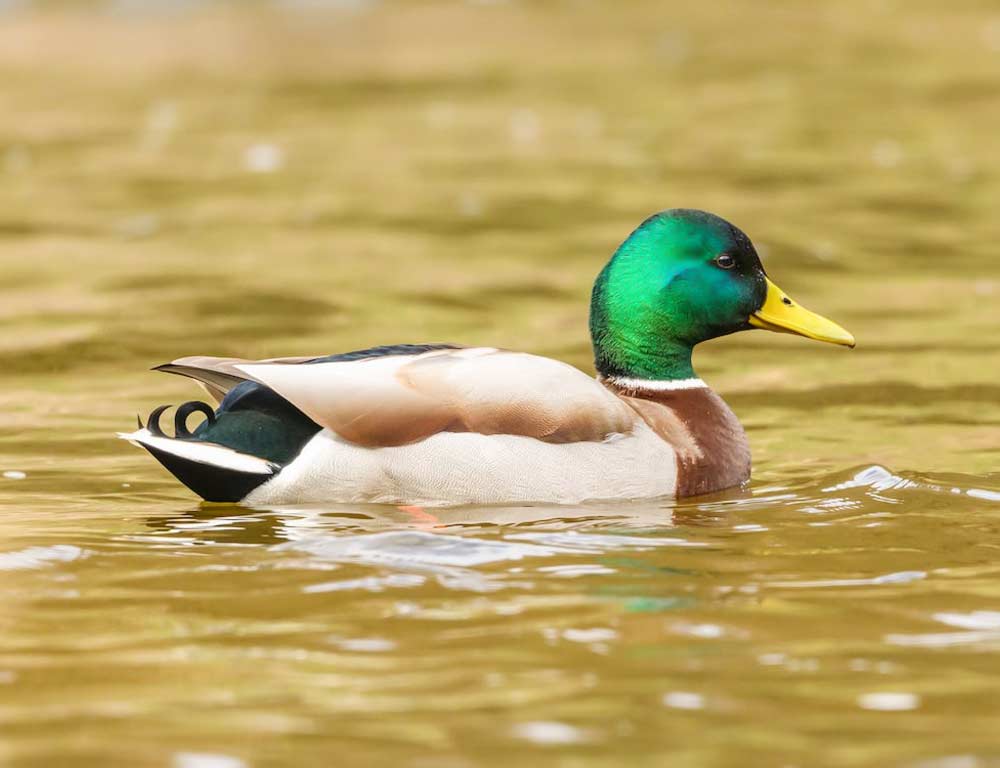
- Scientific Name: Anas platyrhynchos
- Life Span: 5-10 years
- Size: Approximately 20-26 inches
- Weight: 2-3 pounds
- Food: Omnivorous; diet includes aquatic plants, grains, insects, and small fish
- Wingspan: Around 32 inches
- Status: Least Concern
Mallards are highly adaptable ducks in various habitats, including freshwater lakes, ponds, and marshes. They are omnivorous, consuming a diverse diet that includes aquatic plants, grains, insects, and small fish.
Mallards are known for their adaptability to human-altered environments, often coexisting with people in urban and suburban areas. In Hawaii, Mallards may be found in natural and artificial water bodies.
Conservation efforts often involve managing their interactions with local ecosystems and addressing potential issues related to hybridization with native duck species.
Wrapping Up
The intricate lives of ducks in Hawaii unveil a delicate balance of adaptation and conservation. Each species contributes to the ecological symphony, from endangered endemics to migratory guests.
Preserving their habitats and addressing threats ensures the perpetual harmony of these avian residents.
As Hawaii is a critical refuge for various duck species, fostering awareness and support for conservation initiatives becomes paramount. Thank you very much.